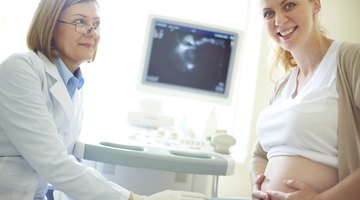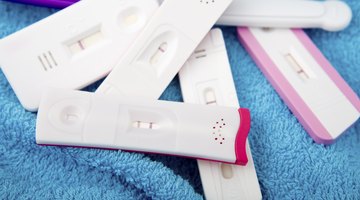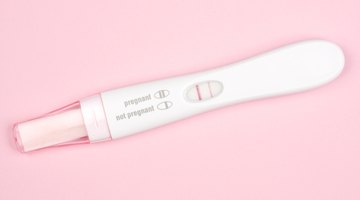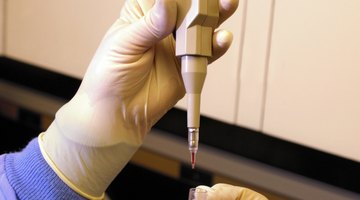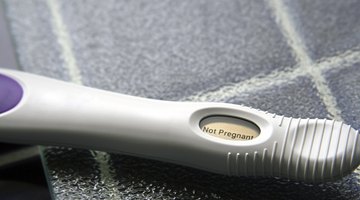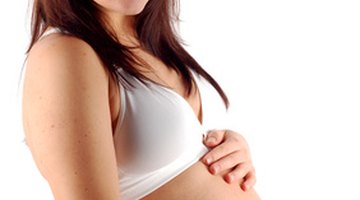7 Female Hormones and How They Affect Your Body
Several hormones are closely involved in female reproduction, taking girls and women through puberty, monthly periods, pregnancy and beyond. According to Jennifer Wu, MD, an obstetrician and gynecologist at Lenox Hill Hospital in New York City, all of them are also produced in men — though in different amounts.
Here are the main female reproductive hormones.
Estrogen
Estrogen is by far the most familiar "female" hormone. However, there are many different types of estrogens. Estradiol, or E2, is active in puberty and during the reproductive years; estriol, or E3, is produced during pregnancy; and estrone, or E1, is post-menopausal estrogen.
In women, estrogen is primarily produced by the ovaries (although the adrenal glands and fat cells also make some). It helps the body mature sexually and ensures that the lining of the uterus thickens properly before ovulation. If you become pregnant, it contributes to the development of the placenta, breast tissue and fetus, per the Society for Endocrinology.
Estrogen levels are highest during the first half of the menstrual cycle. (The first day of your menstrual cycle is the first day of your period; a typical menstrual cycle is 28 days, plus or minus seven days.) Estrogen also has nonreproductive roles throughout the body, contributing to strong bones and also affecting your heart, brain and muscles, according to the University of Rochester Medical Center.
Read more: How Does Exercising Affect Your Period?
Progesterone

Symptoms When You Do Not Ovulate From Perimenopause
Learn More
With estrogen, progesterone is one of two female “sex hormones," although men also produce progesterone.
“[In women], progesterone is another ovarian hormone,” says Rashmi Kudesia, MD, a reproductive endocrinology and infertility specialist at Houston Methodist. “[Estrogen and progesterone] are the two hormones that dictate the menstrual cycle.”
While estrogen is busy at work at the beginning of the menstrual cycle, progesterone peaks in the second half of the cycle, which typically starts 14 days before the first day of your period. It thickens the uterine lining in case a fertilized egg is implanted. After implantation occurs, progesterone helps form the placenta, which provides nutrients to the fetus. If no egg is implanted, progesterone levels lower again in preparation for the next menstrual cycle.
Testosterone
Yes, women have testosterone — just not as much as men. And it serves similar functions in women, too. “Testosterone contributes to sex drive," says Dr Wu. It is mostly produced in the ovaries, but the adrenal glands can also make testosterone, she adds.
In women, too much testosterone is a characteristic of polycystic ovary syndrome (PCOS), although it's not yet known if it actually causes the syndrome, according to the Endocrine Society. Women with PCOS often have difficulty conceiving, notes Dr. Wu. In addition, excess testosterone can cause women to develop "masculine" traits such as excess hair growth, she says.
Read more: Low Libido, Weight Gain and 4 Other Signs Your Hormones Are Out of Whack
Human Chorionic Gonadotrophin (HcG)

The Role of hCG in Pregnancy
Learn More
Only pregnant women have HcG. It is produced by the tissues which will eventually become the placenta, says Dr. Wu, and is the hormone detected by most home pregnancy kits. (According to the Endocrine Society, these over-the-counter tests can pick up HcG as soon as one week after an egg has been fertilized.)
HcG levels rise progressively until the eighth to 10th week of pregnancy, when they begin to gradually decline, says Dr. Wu. In males, HcG is made in very small amounts and contributes to the production of testosterone and sperm, according to the Cleveland Clinic.
Follicle Stimulating Hormone (FSH)
In women, FSH is responsible for monthly ovulation. In males, it helps trigger sperm production, according to the Society for Endocrinology.
“In the beginning of the menstrual cycle, the pituitary [gland] releases FSH, which goes to the ovary to stimulate the follicles, which are just little sacs with an egg inside,” explains Dr. Kudesia. This follicle stimulation causes one egg to be released each month.
FSH levels are relatively low in younger women and rise as women age, says Dr. Kudesia, because it takes more and more effort to stimulate a diminishing number of eggs. In fact, it's impossible to generalize what your FSH levels are likely to be at any given age — or how likely you are to conceive at any given point. "There's no magic number [that tells you] when you're not fertile," says Dr. Wu. "FSH levels [can] also vary at different times in your cycle."
High FSH levels can be a sign of premature ovarian failure. According to the Mayo Clinic, ovarian failure occurs when your ovaries stop working normally (i.e., stop making estrogen and releasing eggs) before the age of 40.
Read more: Foods for Production of Follicle Stimulating Hormone
Luteinizing Hormone
Luteinizing hormone, also produced by the pituitary, triggers ovulation, or the release of a mature egg. "Luteinizing hormone is measured in ovulation predictor kits," explains Dr. Wu. Luteinizing hormone levels surge about 24 to 36 hours before ovulation, which occurs 14 days before the end of your cycle. In men, luteinizing hormone stimulates the testicles to make testosterone, Dr. Wu says.
Dehydroepiandrosterone Sulfate (DHEA)
The adrenal glands produce the hormone DHEA, which plays a role in producing other hormones, notably testosterone. Too much DHEA can cause excess hair growth and acne, notes Dr. Kudesia.
Related Articles
- Endocrine Society: “What Is Estrogen?”
- University of Rochester Medical Center: “Estrogen's Effects on the Female Body”
- Healthy Women: “Estrogen”
- Society of Endocrinology: “Progesterone”
- Healthy Women: “Progesterone”
- Harvard Health Publishing: “Testosterone — What It Does And Doesn't Do”
- Endocrine Society: “Human Chorionic Gonadotropin”
- Society for Endocrinology: “Human Chorionic Gonadotrophin”
- Society for Endocrinology: “Follicle Stimulating Hormone”
- Endocrine Society: “What is Luteinizing Hormone?”
- Mayo Clinic: “DHEA”
- Society for Endocrinology: "Hormones of Pregnancy and Labour"
- Cleveland Clinic: "Human Chorionic Gonadotropin, HCG Injection"
- Endocrine Society: "Polycystic Ovary Syndrome (PCOS) for Teens"


